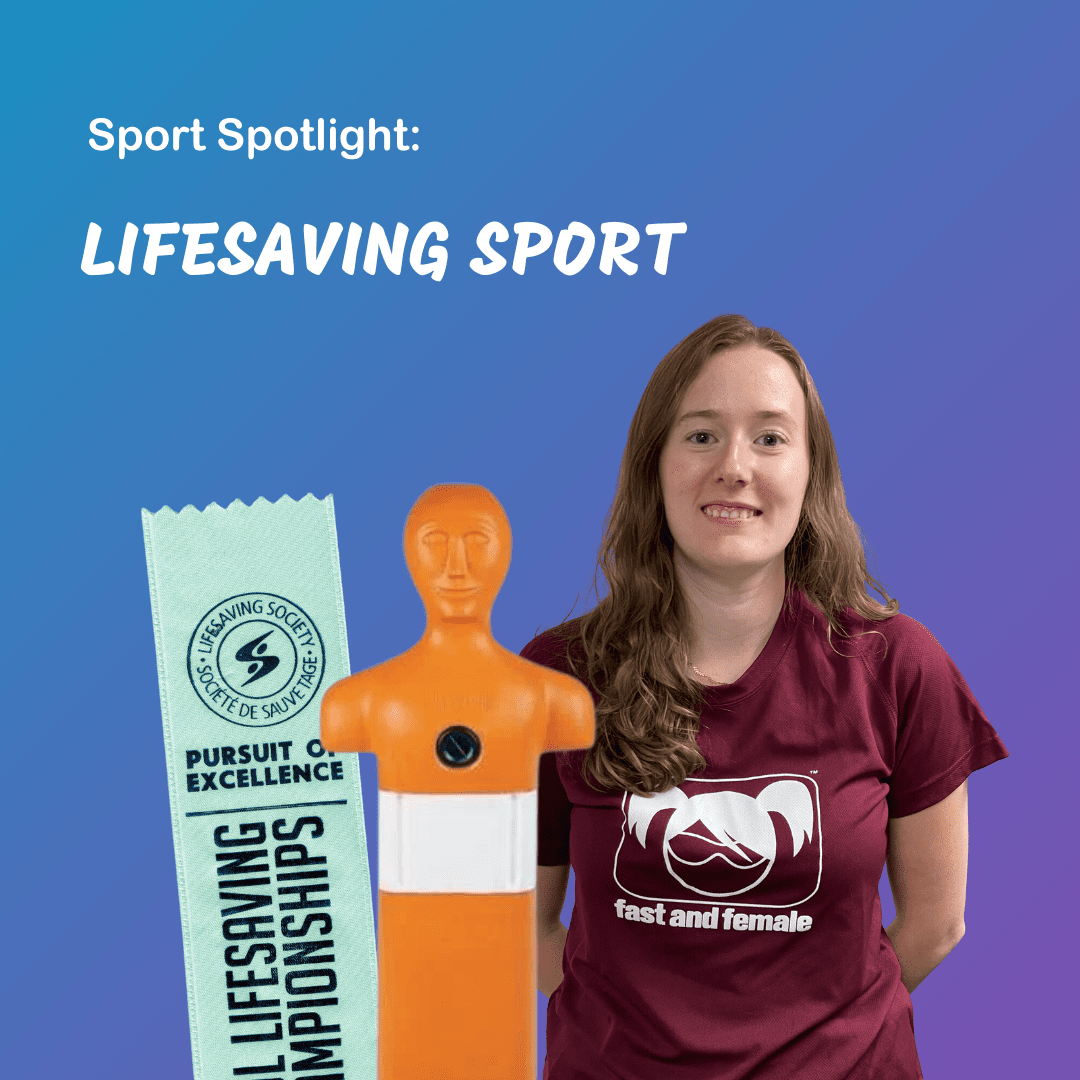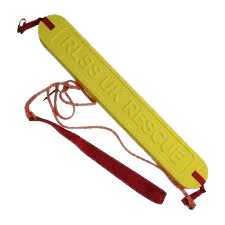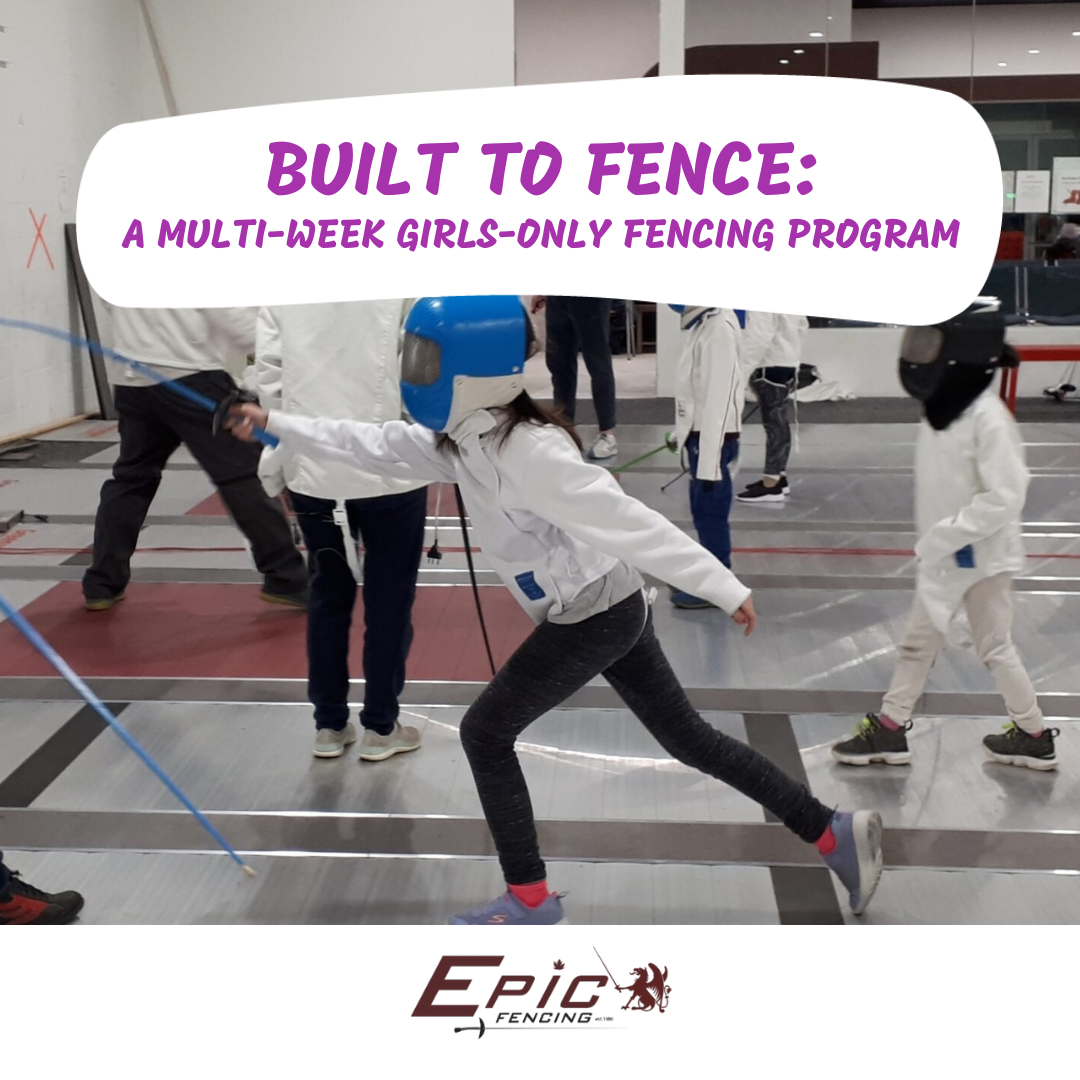“The more women move, the better women feel. Yet, over half of the women are…

Sport Spotlight: Lifesaving Sport
By Morgyn Engman
When I was growing up, I took swimming lessons like most kids. And I really enjoyed it. I wasn’t the fastest or best swimmer, but I liked it. When I got to the highest level of swimming lessons and courses I could take for my age, my mom and I looked for something else that I could do that wasn’t a swim club. This was when I was introduced to Lifesaving Sport. I joined the Junior Lifesaving Club (JLC) at a local pool. This was a mostly non-competitive swimming club that incorporated lifesaving skills. We would spend time learning CPR, first aid and other lifesaving skills. Then we would spend time in the pool. This is where lifesaving sport comes in. Our swimming wasn’t the same as what you typically see and not what they do at the Olympics.
Like traditional swimming, there are different kinds of events. Instead of freestyle, butterfly, and backstroke, there are events like carry, obstacle swim and line throw. Just like regular swim competitions, there are also relays and combination events. We used manikins, rescue tubes, ropes and obstacles for different drills. These different events made me have to improve and adapt my strokes based on what I was doing in an event. For example, in manikin carry, I had to adjust my body position in the water and get used to swimming with one arm. I’ll explain what each event looks like and how different equipment is used.
 Events
Events
- Manikin Carry – This is probably the most popular lifesaving event. For this event, a manikin is held at the opposite end of the pool lying in the water, and the swimmer dives into the water, swims to the other end and picks up the manikin carrying it back to the other end. The swimmer can be on their front or back for the carry portion. To make this more challenging and depending on the swimmer’s age category, the manikin is filled with water, either half or full. When the manikin is full it is placed at the bottom of the pool, and the swimmer has to dive down to retrieve it. There are variations of the distance swam for this event, but the carry part is always only one pool length.
 Manikin Tow – Similar to the manikin carry event, a manikin is held at the opposite end of the pool from swimmers. When preparing to dive, swimmers put on a rescue tube. This has a loop to put on, with a rope and rescue tube attached at the end. Swimmers dive in and swim to the manikin and grab the manikin, and wrap and clip the rescue tube around it. They then swim back to the other end of the pool to end the event.
Manikin Tow – Similar to the manikin carry event, a manikin is held at the opposite end of the pool from swimmers. When preparing to dive, swimmers put on a rescue tube. This has a loop to put on, with a rope and rescue tube attached at the end. Swimmers dive in and swim to the manikin and grab the manikin, and wrap and clip the rescue tube around it. They then swim back to the other end of the pool to end the event.- Obstacle Swim – This event uses what is literally called an obstacle. It is something that blocks the lane about 2 feet deep, forcing swimmers to surface dive under it. The obstacle is attached to the lane ropes at the halfway point in the lane.

- Line Throw – This was originally my least favourite event. But I really started to enjoy it later on. It is the most different event because the competitor is not actually in the pool. The competitor is standing on the pool deck with one end of a rope (lengths vary based on age). There is a volunteer who swims to the indicated distance with the other end of the rope. When the whistle blows, the competitor has to pull the rope in (without the volunteer) and then throw it back out to the volunteer, and then pull them back into the edge of the pool.
- Simulated Emergency Response Competition (SERC) – This event is completed by 4-person teams. All teams are kept in a private room, not able to see or hear what happens on the pool deck or in the pool. Officials set up simulated lifesaving situations. When a team is released, they have 2 minutes to “save” as many people as possible. This includes deciding which situations to approach first.
Another cool part of this sport is that some events use fins! This was really fun but caused some issues for me. At my
 first competition, my first event was a manikin carry with fins. It was only a 50 metre event, and carry was one of my most practiced events. I got on to the diving block and was ready to dive in. The whistle blew, and I dove in, and one of my fins came off. I popped my head out of the water, and I saw my coach yelling to keep going. So I did. It was a challenge and something I wasn’t expecting. But it gave me an experience to learn from – always keep going. Later fins did become better. As I got older, larger fins became more popular. Once I turned 14, I could use fibreglass fins. They’re huge and can be much harder, so they push a lot more water to make you faster.
first competition, my first event was a manikin carry with fins. It was only a 50 metre event, and carry was one of my most practiced events. I got on to the diving block and was ready to dive in. The whistle blew, and I dove in, and one of my fins came off. I popped my head out of the water, and I saw my coach yelling to keep going. So I did. It was a challenge and something I wasn’t expecting. But it gave me an experience to learn from – always keep going. Later fins did become better. As I got older, larger fins became more popular. Once I turned 14, I could use fibreglass fins. They’re huge and can be much harder, so they push a lot more water to make you faster.
What initially made me want to be involved in JLC was that it was recreational, which had always been a challenge to find growing up. I enjoyed being active but always felt like I had to be very competitive and skilled to do so. Although I originally started in JLC to swim recreationally, there were competitions offered, and I quickly decided to compete. There weren’t many competitions every year, but they were fun. I always focused on competing against myself instead of everyone else. The best part of my lifesaving sport experience was some of the coaches. I had an amazing woman coach who competed very competitively in the sport. She worked hard to help me improve and compete against myself.



